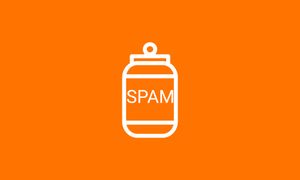Every business owner, marketer, promoter, and so forth should fully understand the importance of content marketing. Without regurgitating the same jabber that you’ve heard again and again, just accept that content marketing is an absolute powerhouse.
Once content marketing is an edible part of your promotional blueprint, you need to zero in on the type of content that you will produce. While blog posts, articles, infographics, and so forth are still super useful, video content is becoming epically persuasive online. Some of this valuable video content is consumed through webinars.

Webinars are a potent method for driving awareness, engagement, sales, and other critical business metrics in an affordable and scalable way. These digital classrooms will allow you to present valuable information to your audience and position yourself as a thought leader on a given topic. While there are tonnes of fantastic resources for gaining webinar tips and tricks, like this awesome blog from ClickMeeting, there is an equal amount of outdated info that can cause your webinar to flop. Hard.
If you’ve never run a webinar before but are ready to dive in, this is the perfect place to gain an understanding of what you need to do. If you have run them before and are looking for ways to improve, meet your new webinar cheat sheet.
Here are the guidelines for running the perfect webinar.
Pre-Planning
To get started, you need to set your goals for the webinar. Are you looking to drive sales, acquire emails, or something else entirely? Establish what you want to get out of the webinar first so that you can gear your efforts towards that goal.
It is also wise to set your budget early on so that you don’t end up overspending. Be sure to account for supporting content like blogs, any ads that you may produce, speaker acquisition costs, potential prizes, and any tools you may use along the way.
Next up is the research phase. Identify interests, pain points, career objectives, and other defining features of your audience so as to select a topic that will be valuable to these folks. Once you have uncovered these characteristics, establish a tentative title and choose a host.
Now that you have a subject under your belt, you need to acquire 1-3 presenters who can speak to this topic and provide actionable information. You can uncover these folks using tools like ClearVoice and Kred, searches on social media, and a variety of other identification tools. Begin to reach out to these people via social media and email to see who might be interested in participating. Be sure to ask for headshots from those who agree; you’ll need them for your content and emails.
Setting Up the Foundation
When it is time to begin setting up, you will first need to select a platform. To set up your webinar landing page, you need the webinar’s title, description, time and date, along with a sign-up form, speaker bios, and a promotional video for the event. Most webinar tools automate this process for you, so it’s much easier than it sounds. It is also wise to post a countdown video on the webinar page to remind any visitors when it will be taking place.
Next, create the first draft of the webinar outline alongside the speakers. Be sure to include:
• Speaker introductions along with channels they wish to promote
• Points of discussion
• Approximate length of presentations
• A rough draft of slides
• A deadline for the materials
Now the fun part begins; you can start promoting your webinar.
Marketing Efforts
Start with your email subscribers. These folks are already interested in the materials you produce and will be the most likely to sign up. Be sure to make your emails compelling by pointing out what they stand to learn, benefits of attending, speaker overviews, and other pertinent details like the time and date, and a link to sign up.
To help amplify the number of registrants, you can offer a free gift like an eBook download to anyone who signs up. This will not only encourage people to join but will add increased value to the webinar material.
Be sure also to promote the webinar through social media posts, social ads (if your budget can accommodate), and supporting content. Make sure your speakers are sharing the event as well. Continue your promotional efforts up until the day of the webinar and send out automated emails at regular intervals to remind people about the broadcast.
Pre-Webinar Prep
This will likely be the easiest part of the whole process. In preparation for the event, you will want to provide speakers with any guidelines such as your asks, do’s and dont’s, webinar formatting, the number of speakers, and any other relevant information.
Be sure also to schedule a test run to make sure everyone is comfortable with the format and that there is no conflicting information. You will want to provide presenters with a set of instructions for this as well. You can either hold the test run over the phone or on the actual webinar platform to make sure that all features are working properly and that all are acquainted with the controls.
Webinar Time
When the day of the webinar arrives, be sure to send out reminder emails to any registrants to ensure maximum attendance. Have the host log on to the webinar platform 1 hour ahead of time to verify that everything is working properly. As speakers log on (10-30 minutes beforehand), it is wise to connect via IM in case there are any technical issues.
When the webinar begins, hit the record button and share via social that the event is now live. Proceed by thanking all in attendance, mentioning the name of the webinar, and introduce the speakers along with social information, websites, and anything else they wish to promote.
As the webinar advances, gather any questions posed by the audience that can be presented to speakers in a Q&A session afterwards.
After the Q&A session has concluded, be sure to thank the attendants, speakers again, and mention that the recording of the webinar will be posted online later on.
Post Webinar Follow Up
Finally, convert the webinar recording into a YouTube video or viewable file to share with the web; also send this to the speakers to share.
Then send a follow-up email to those who attended thanking them and asking for any feedback. You can also direct them toward any relevant links where you can try to make a sale. Also send follow-up emails to those who did not attend with the information covered in the webinar and a link to the video replay.
Lastly, analyse your results. Take note of attendance numbers, conversions, email conversions, and successes/failures from the event overall so that you can improve for the next broadcast.
When properly conducted, webinars are an incredible vehicle for driving just about any goal you can think of. Utilise this information to the fullest so that you can construct a webinar that helps you achieve new levels of success.
What is your favourite webinar platform? Any questions about the webinar process that we didn’t address above?






